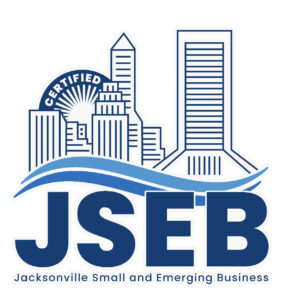Businesses around the world are deploying or updating their existing business networks to accommodate Cat6a twisted-pair Ethernet cables, and it is quickly becoming the standard for business applications.
There are several reasons for this global trend and shift in cabling preference, most likely because Cat6a cables support higher bandwidth, 10GbE networks, and Power over Ethernet (PoE) adoptions for faster, better business network performance.
However, when it comes to Cat6a cables, business owners are often confused between shielded or unshielded Cat6a cables for their business.
Today, we will discuss these options and their differences to help you decide whether shielded or unshielded Cat6a cables are ideal for your business.
Of course, we highly recommend consulting expert professionals like Communications Solutions Inc. in Jacksonville, Florida, for the best advice.
That being said, let’s start by first explaining what a Cat6a cable is.
What Is a Cat6a Cable?
Cat6a is short for Category 6a, a type of Ethernet cable for network purposes. It is an improvement on all previous category Ethernet cables like the Cat6, Cat5e, and Cat5 cables. Cat6a cables can support data transmission rates of up to 10Gbps with a maximum frequency or bandwidth of 500MHz, at a data transmission distance of up to 100m.
This gives the Cat6a cable an Ethernet application protocol, or “standard,” of 10GBASE-T. This standard describes the abovementioned supported parameters of Cat6a cables. Cat6a cables have additional and tighter twists than previous categories of Ethernet cables and added insulation for reducing crosstalk.
Cat6a cables also have backward compatibility with Cat6 and Cat5e cables. However, it would be best to remember that your business network’s network performance and speed will always only be as good as its slowest component, which includes network devices and cables.
Why Cat6a Cables?
As mentioned previously, Cat6a cables are becoming increasingly popular for business applications. They are a cost-effective cabling solution that is also highly effective for future-proofing your structured cabling and business network.
If you plan to extend the usability of your structured cabling by at least 5-years, Cat6a cables can be an ideal, cost-effective solution. However, if you plan to extend it by at least ten years, Cat6a cables are a necessary and highly recommended solution.
Professionals worldwide recommend Cat6a cabling for new installations in various sectors, including business, healthcare, education, and more.
However, the question remains…
Shielded or Unshielded Cat6a Cables for Your Business?
Shielded twisted pair cable (STP) and unshielded twisted pair cable (UTP) are well-designed Ethernet cables that offer reliable data transmissions and network connectivity. However, they differ in design and performance.
Let’s look at each and compare the two to help you better understand which one is best suited for your business needs.
Cat6a Unshielded Cables (UTP)
Cat6a unshielded twisted pair cables have four sets of twisted-pair copper wires. Each copper wire is insulated and color-coded. Each twisted pair has a different twist rate to ensure minimal crosstalk between the cable pairs.
The entire set of 4 twisted pairs of copper wires is bundled and insulated with an overall cable jacket, typically made of flexible PVC material. Cat6a UTP cables are easy to terminate because of the lack of shielding, which reduces the time and costs involved with termination.
Cat6a Shielded Cables (STP)
Cat6a shielded twisted pair cables are shielded, which is excellent for preventing electromagnetic interference (EMI) from external electronic devices or electrical components. They prevent EMI from hindering data transmission or cable performance.
If other cables are nearby, Cat6a STP cables will also prevent those signals from causing interference. These cables effectively reduce EMI and crosstalk, preserve data integrity, and maintain consistent high-speed performance.
However, you cannot connect shielded cables with unshielded cables. Still, different shielded Ethernet cables provide varying degrees of shielding. They may shield the entire cable, each twisted pair within the cable, or both.
Here is a simple chart to help you better understand the various types of shielded and unshielded cables.
| Cable Acronym | Shielding Description | Twisted Pair Shielding | Entire Cable Shielding |
| UTP or U/UTP | Unshielded Twisted Pair | None | None |
| F/UTP | Overall Foil Shielding | None | AL Foil |
| U/FTP | Each Twisted Pair Foil Shielded | Aluminum Foil | None |
| S/FTP | Each Twisted Pair Foil Shielded + Overall Braid Shielding | Aluminum Foil | Tinned Copper Braid |
| SF/UTP | Overall Foil Shielding + Overall Braid Shielding | None | Aluminum Foil + Tinned Copper Braid |
| F/FTP | Overall Foil Shielding + Each Twisted Pair Foil Shielded | Aluminum Foil | Aluminum Foil |
Chart Key: U = Unshielded, TP = Twisted Pair, F = Foil Shield, S= Braided Shield
Choosing the Right Cat6a Cables for Your Business Network
The main things to consider when choosing Cat6a cables for your business network are the environment of the cables and your budget.
· Environment
For most small businesses, unshielded Cat6a cables are the ideal option unless their office is packed with EMI-emitting devices or the office is located close to electrical power lines. Moreover, poorly structured cabling or densely structured cabling may also cause interference in unshielded Cat6a cables.
Fortunately, most small business environments do not have enough EMI or interference to warrant shielded Cat6a or other shielded Ethernet cables. On the other hand, large businesses, offices, or facilities such as industrial plants, hospitals, etc., typically require shielded Ether cables due to their environment.
They typically have a lot of heavy-duty machinery, dense/complex structured cabling, fluorescent lighting, power generators, elevators, air conditioning, and other things that may produce powerful EMI. Hence, they are recommended to opt for shielded Cat6a Ethernet cables.
· Budget
Budget is also a key factor to consider when choosing Cat6a cables. Naturally, shielded Ethernet cables are more expensive than unshielded ones. Moreover, they are more difficult to install than unshielded cables due to stiffness and reduced flexibility from all the shielding materials inside.
This means unshielded Ethernet cables cost less and are less expensive to install. However, you must evaluate your cable budget considering other things, such as the long-term value of the reliability, speed, and performance of shielded Ethernet cables.
Shielded Cat6a cables may provide more value depending on your business network requirements, thus being more cost-effective than less expensive unshielded counterparts.
Conclusion
We hope you understand shielded and unshielded Cat6a cables and how the shielded ones are ideal for your business. Your choice typically boils down to your business environment and cabling budget.
However, we highly recommend you consult expert professionals like Communications Solutions Inc. in Jacksonville, Florida, for the most sound advice on business networks and structured cabling. They can help you choose the correct options according to your business type, environment, network needs, and more.
If you want to learn more about shielded or unshielded Cat6a cables, other Ethernet cables, or the best business network and structured cabling solutions in Florida, Contact Us Today!



